Keith Haring: The Artist Who's Everywhere
Haring's playful and societal commentary is still today found everywhere. On February 16, it's been 30 years since his passing.
There’s a simple reason why cartoons like Bugs Bunny and Wile E. Coyote & The Road Runner continue to crack us up even as an adults: they’re simply great. They evoke this fundamental feeling of nostalgia for every adult who indulged in them as a kid, while still being a phenomenal vessel for creativity and goofball shenanigans. Cartoons are for everyone, not just children – they are truly public art.
New York artist Keith Haring’s greatness lies in just that. If you were to ask any New Yorker riding the subway in the early 1980s, you’d have a difficult time finding someone unfamiliar with the simplistic white chalk drawings seen on the matte black paper covering the empty advertising panels. With this, the heavily cartoon-influenced Keith Haring found a way to communicate with the wider audience he’d been looking for. He began to draw his soon-to-be iconic white chalk on pretty much every empty advertisement panel he came across. Soon a staple among New Yorkers’ everyday commutes, Haring could sometimes create 40 pieces in a single day, making his art truly public.
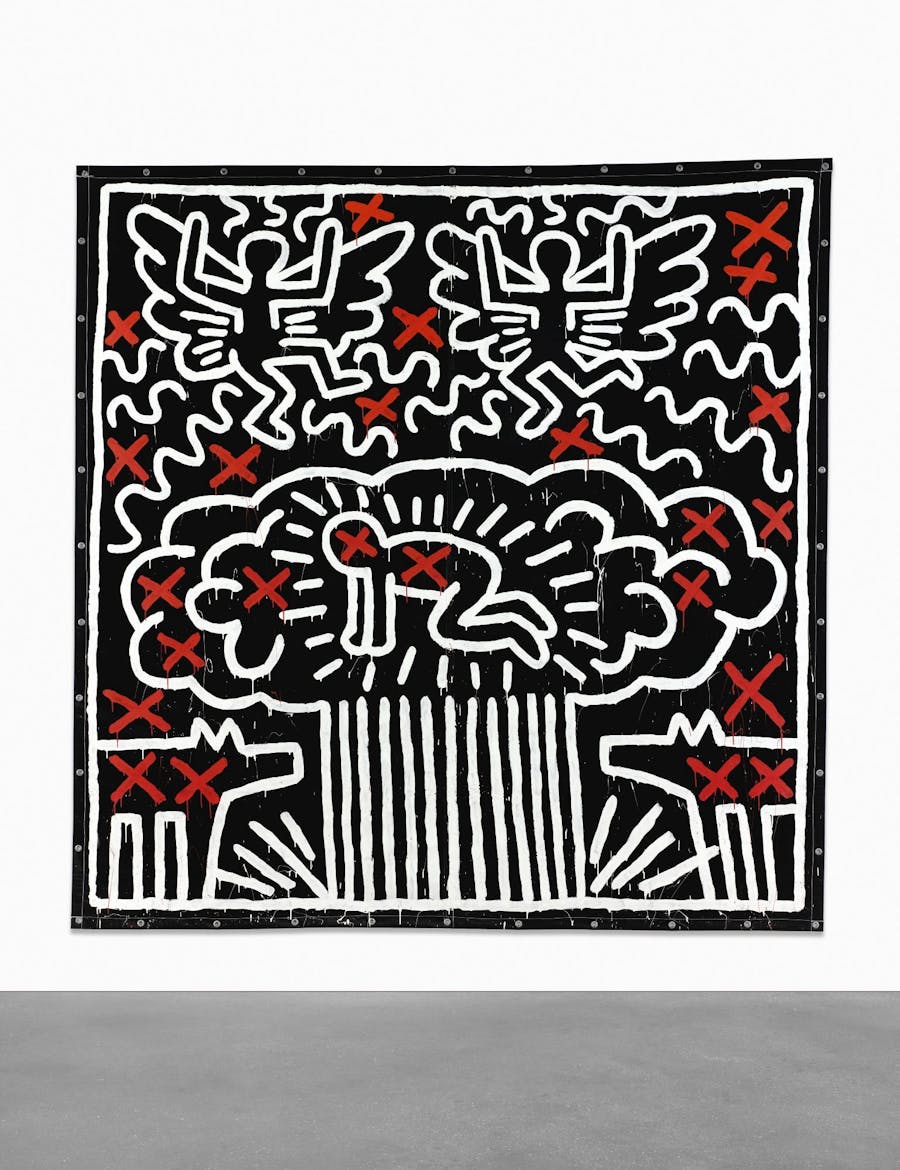
”In the late 1970s, you had such a strong DIY mentality along with heavy critique of the art establishment, particularly the convoluted, minimalistic and political art. Artists wanted to take matters into their own hands, as well as locate a more direct expression by communicating with the public,” John Peter Nilsson, curator at the Stockholm Modern Museum, says while speaking to Barnebys.
The East Village Art movement in New York was growing at this time. The stark contrast between the shoddy and rundown East Village, and the chic and expensive Soho merely provided additional fuel to the DIY art scene. Artists like Haring and Jean-Michel Basquiat each had an art school background – Haring attended the Ivy School of Professional Art in Pittsburgh in the late 1970s – but were immensely inspired by street art and graffiti art. Art galleries presented pure graffiti artists from the Bronx, and artists like Julian Schnabel made pieces of art on velvet and broken porcelain.
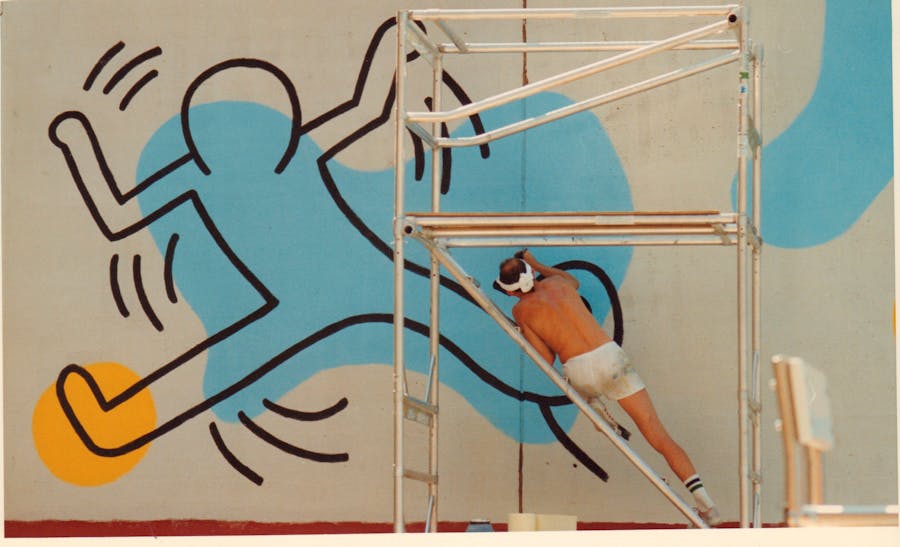
”These were brutal and kind of ugly, an almost anti-aesthetic,” adds John Peter Nilsson. "Keith Haring wanted to remove the barrier between the artist and the public by bringing his art to the public space, without a gallery separating the two. The Radiant Child, his Barking Dog and other small, recurring symbols became tiny tales, often hugely inspired by Haring’s own life.”
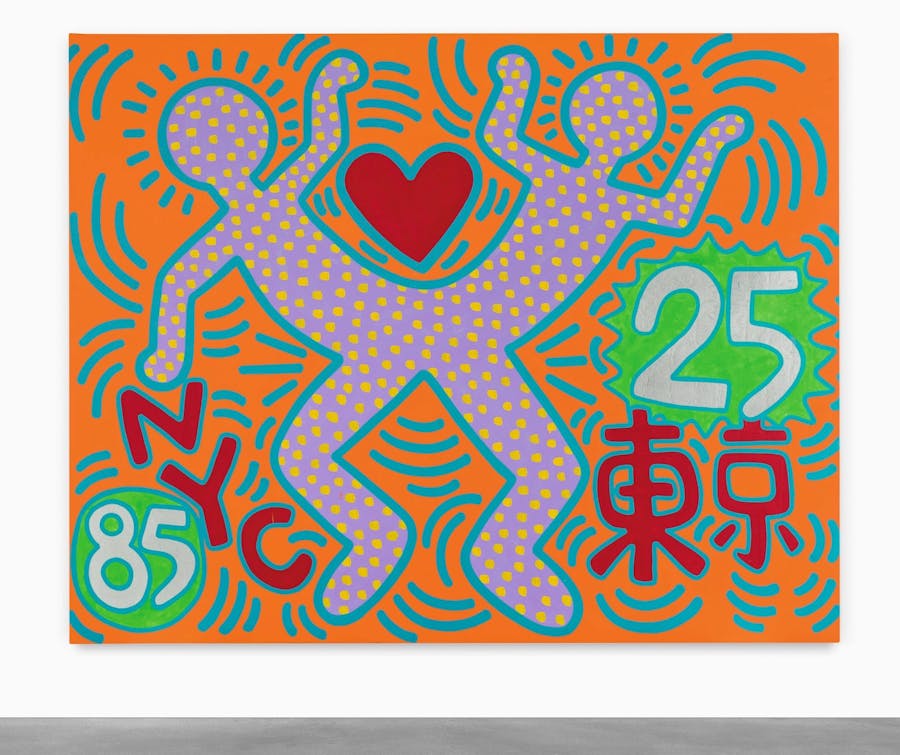
Keith Haring grew up in a religious home – his family regularly attended the Church of God congregation – with a loving mother and a father who was an engineer and an amateur cartoonist. With exposure to the 1960s flood waves of counter-culture, the Vietnam War and race riots, Haring became determined to have his art channel the modern age, and stand up for the ones being put down by higher powers.
After moving to New York in the early 1980s, soaking up the underground art scene with fellow artists – like Basquiat and Kenny Scharf, and taking inspiration from not only Basquiat but also Andy Warhol and Christo, together with figures such as realist painter Robert Henri and author William S. Burroughs – Haring began shaping what was to become a hugely influential career.
His first solo exhibition was at the Westbeth Painter’s Space in 1981. The following year Haring made his Soho gallery debut at the Tony Shafrazi Gallery, where his one-man exhibition became widely acclaimed and garnered huge popularity during its run. And for the first half of the 1980s, Haring held exhibitions in numerous places in the US, like the Whitney Biennial, but also Documenta 7 in Kassel, and the São Paolo Biennial, among several other locations around the world.

Apart from doing his public art and gallery work, Keith Haring also created an animation for the Spectacular billboard in Times Square, worked on theater sets, created watch designs for Swatch, as well as an advertisement for Absolut Vodka. His public work, often conveying social messages, continued throughout the 1980s, and is still available throughout the world. Haring himself was usually keen on making his art for charities, in hospitals, and in children’s day care centers, further cementing his personal agenda to help others in need with his art.
In 1986 – the same year he created his famous Crack is Wack mural at East 128th Street and the Harlem River Drive in New York City – Haring opened up his Pop Shop in Soho. Here, he began selling t-shirts and other souvenir-type items, all carrying his, by this time, iconic imagery. For him, the shop and the items being sold were just as important as his 'real' work, and he saw no distinct difference between one of his murals and a coffee mug featuring his art. But this wasn't without criticism from art critics and curators around the world, for whom this approach was too commercial.
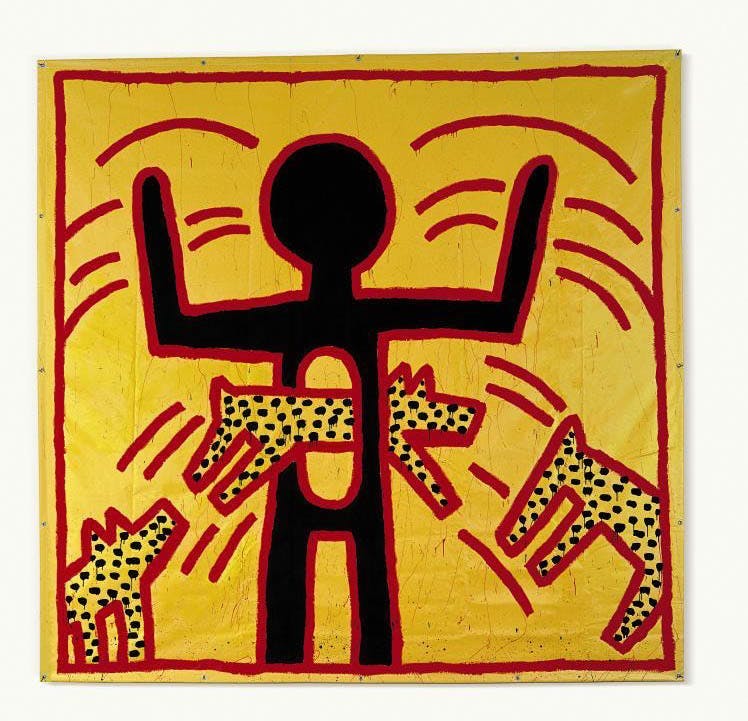
"I recently saw an 8-year-old with a Keith Haring sweatshirt. All of the earnings from the sales of his work slapped on; things are, no matter what your opinion of it is, still making money for good causes. The risk lies in overexposing your work like this, it casts a kind of shadow over the artist. But, at the same time, it was his goal to reach as many people as possible,” John Peter contemplates. It is certainly true that for a guy starting out on the New York subway system chalking figures on empty advertising panels, he used his art to connect to a huge audience, and it still resonates today, almost thirty years after he died from AIDS.
"He wasn’t a pure pop artist, in the same sense that Warhol wasn’t one. Their work always had a healthy dose of social awareness, where themes like alienation in general and Haring’s own sexuality were present, in particular,” John Peter says. ”This kind of alienation was something many people dealt with at that time, and Haring was able to communicate these themes through his work. We see elements from comic books, cartoons, sci-fi – it’s almost like a metaphor that there’s a great unknown feeling that affects us all. That power struggle is illustrated with his piece on the vessels landing.”

One historic landmark featuring Haring’s art is a Catholic Youth Center in Manhattan. The stairwell was covered in Haring’s art, featuring recurring iconic pieces like The Radiant Child and The Barking Dog.
Haring began painting in 1983, and when it was decided that the building needed to be renovated and remade into an apartment complex recently the pieces were carved out of the walls of the house, much thanks to the owners of the building – The Ascension Church.
The church apparently spent around $1 million to have 13 figures removed by conservators, that were then auctioned off by Bonhams. The church wanted most of the earnings to be donated to the Keith Haring Foundation, but the Foundation were not particularly pleased with how the situation was handled by the church, saying, ”We are disappointed. These murals were not made to be sold off to private collectors, they were there for the kids.” Which definitely sounds like something Haring himself would have said. Even though the mural was never signed by Keith himself, it sold for a record $3.8 million in November.
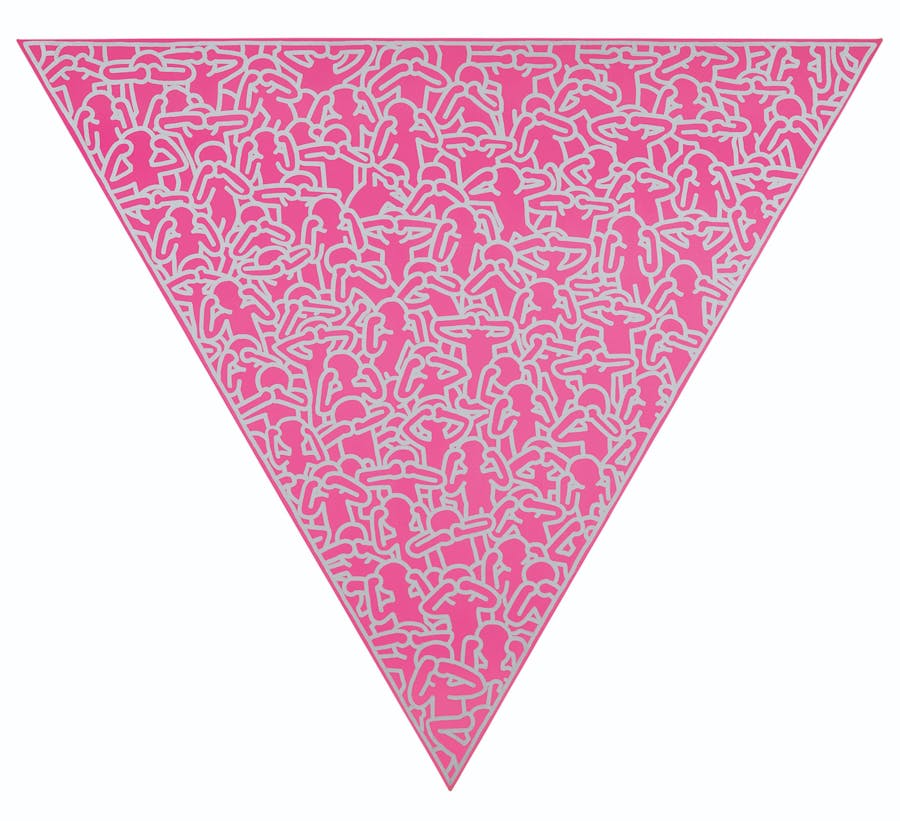
The effort made by the church and the value of these peculiar pieces provide some insight into what Haring means for the art world in the 21st century. Or one could just simply have a look at the pieces being auctioned. In May 2017, Haring’s Untitled sold at Sotheby’s for $6.5 million, Silence = Death sold at $5.6 million at Christie’s in May 2019, and in November 2018 Sister Cities - For Tokyo sold for $4.45 million at Sotheby’s. Compare this with pieces sold by the same auction houses ten or fifteen years ago, and they’ve most certainly increased in value.
Even though he was only active as an artist for barely ten years three decades ago, Haring's work and simplistic aesthetics continue to resonate well into our time.
Text: David Johansson


